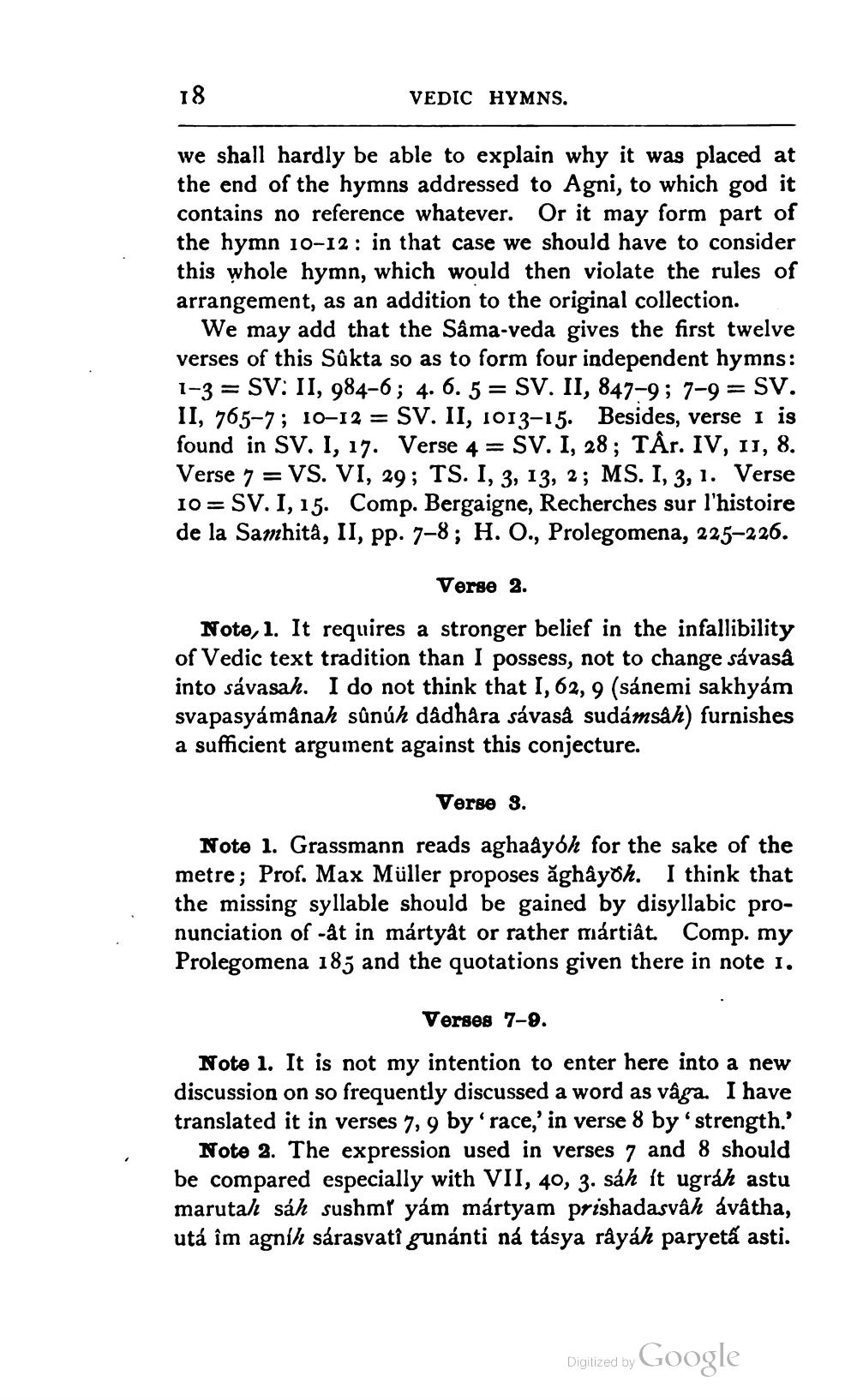________________
18
VEDIC HYMNS.
we shall hardly be able to explain why it was placed at the end of the hymns addressed to Agni, to which god it contains no reference whatever. Or it may form part of the hymn 10-12 : in that case we should have to consider this whole hymn, which would then violate the rules of arrangement, as an addition to the original collection.
We may add that the Sâma-veda gives the first twelve verses of this Sûkta so as to form four independent hymns: 1-3 = SV: II, 984-6; 4. 6.5 = SV. II, 847-9; 7-9 = SV. II, 765-7; 10–12 = SV. II, 1013-15. Besides, verse 1 is found in SV. I, 17. Verse 4 = SV. I, 28; TÅr. IV, 11, 8. Verse 7 = VS. VI, 29; TS. I, 3, 13, 2; MS. 1, 3, 1. Verse 10= SV. I, 15. Comp. Bergaigne, Recherches sur l'histoire de la Samhità, II, pp. 7–8; H. O., Prolegomena, 225–226.
Verse 2.
Note, 1. It requires a stronger belief in the infallibility of Vedic text tradition than I possess, not to change sávasa into sávasah. I do not think that I, 62, 9 (sánemi sakhyám svapasyamânah sûnúh dadhara sávaså sudámsåh) furnishes a sufficient argument against this conjecture.
Verse 3. Note 1. Grassmann reads aghaâybh for the sake of the metre; Prof. Max Müller proposes ăghảyðh. I think that the missing syllable should be gained by disyllabic pronunciation of -at in mártyát or rather mártiât. Comp. my Prolegomena 185 and the quotations given there in note 1.
Verses 7-9.
Note 1. It is not my intention to enter here into a new discussion on so frequently discussed a word as vaga. I have translated it in verses 7, 9 by'race,' in verse 8 by strength.'
Note 2. The expression used in verses 7 and 8 should be compared especially with VII, 40, 3. sáh ít ugráh astu marutal sáh sushmľ yám mártyam prishadasvâh ávatha, utá îm agníh sarasvati gunánti na tasya râyáh paryeta asti.
Digitized by Google




